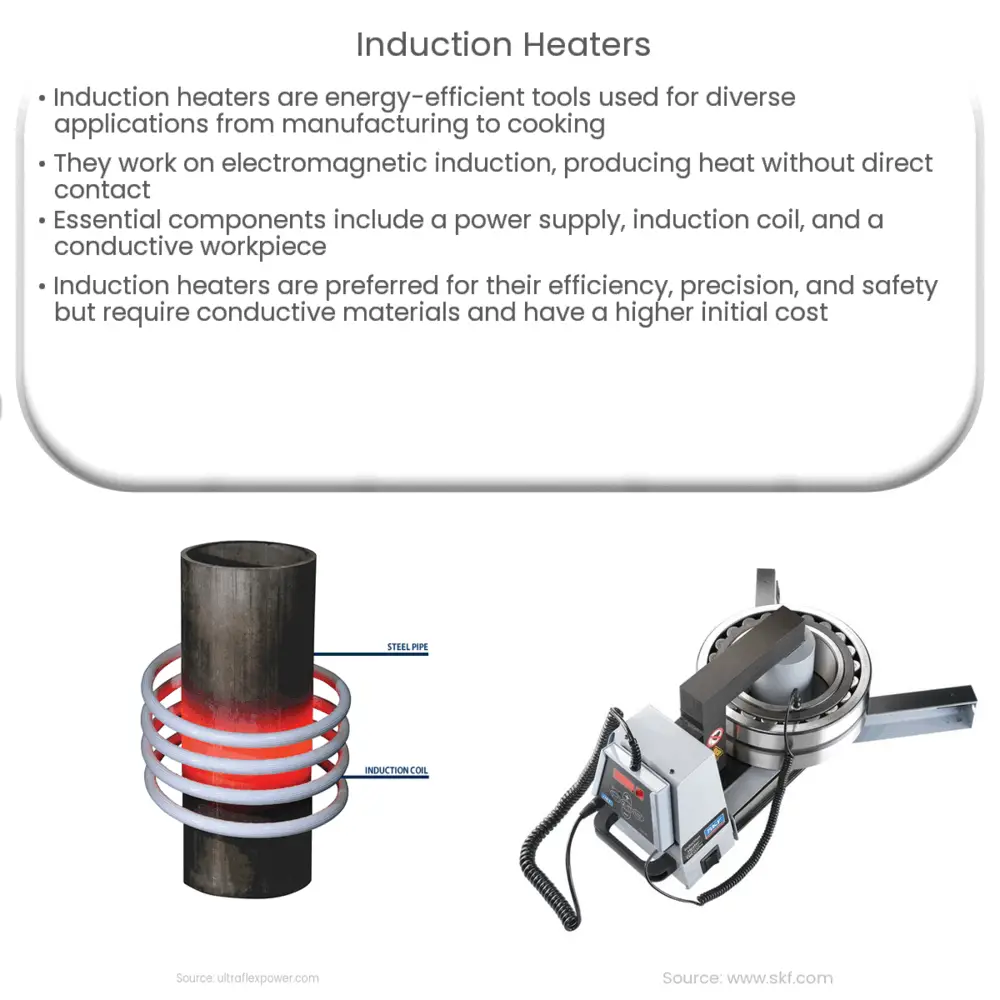Explore the world of induction heaters, their working principle, components, applications, benefits, and challenges in this comprehensive guide.

Introduction to Induction Heaters
Induction heaters are among the most advanced, versatile, and energy-efficient tools for heat generation. This transformative technology has found its way into many applications, ranging from industrial manufacturing processes to household cooking.
Understanding the Science Behind Induction Heaters
Induction heating operates based on the principle of electromagnetic induction. In its simplest form, it is a process that uses electricity to generate heat without requiring direct contact. This is achieved by passing an alternating electric current through a coil, often referred to as an ‘induction coil’, to create a fluctuating magnetic field. When an electrically conductive material is placed within this magnetic field, eddy currents are induced within the material, producing resistive heat.
Components of an Induction Heater
- Power Supply: This is an essential component of an induction heater. It generates a high-frequency alternating current (AC).
- Induction Coil: The coil produces a magnetic field when the AC passes through it. The design and shape of the coil can be adapted to suit specific heating requirements.
- Workpiece: This is the material to be heated. It must be electrically conductive to allow for the generation of eddy currents.
Applications of Induction Heaters
- Industrial Heating: Induction heaters are widely used in the metal industry for processes like hardening, annealing, tempering, and melting.
- Induction Cooking: In the culinary world, induction cooktops have gained popularity for their efficiency and safety.
- Medical Applications: In the medical field, they are used for sterilizing metal equipment and for hyperthermia treatment in oncology.
Induction heaters have a unique blend of scientific marvel and practical utility. They provide a heat source that is direct, efficient, and capable of extreme precision. As you dive deeper into this fascinating subject, you will discover even more exciting applications and potential for future developments.
Benefits and Advantages of Induction Heaters
Induction heaters offer numerous advantages over traditional heating methods. Let’s explore some of the key benefits:
- Efficiency: Induction heating is highly efficient as it generates heat directly within the workpiece, reducing energy wastage.
- Precision: The heating process is very precise, which is especially useful in industries requiring accurate temperature control.
- Safety: Since the heating element itself does not get hot, induction heaters are generally safer to operate than traditional heating devices.
- Speed: Induction heaters can heat objects very quickly, contributing to faster production times in industrial applications.
Challenges and Considerations
Despite their many benefits, induction heaters do come with some considerations that need to be understood:
- Material Limitations: Not all materials can be heated by induction. Only conductive materials, like metals, can be heated effectively.
- Initial Cost: Induction heating systems can be expensive to install initially. However, the cost can often be offset by their high efficiency and low maintenance needs over time.
- Technical Knowledge: Proper use and maintenance of induction heaters require some technical knowledge, which could necessitate training.
Conclusion
In conclusion, induction heaters represent a significant technological leap in heat generation. They offer a more efficient, precise, and safe way to heat conductive materials, making them an increasingly popular choice in a variety of industries. While there are considerations and challenges associated with their use, the benefits often outweigh these issues. As we continue to seek energy-efficient solutions in our evolving technological landscape, it is likely that the application of induction heating will continue to expand and diversify. Whether used in industrial settings, in our kitchens, or in medical facilities, induction heaters are undoubtedly a key player in our future.



